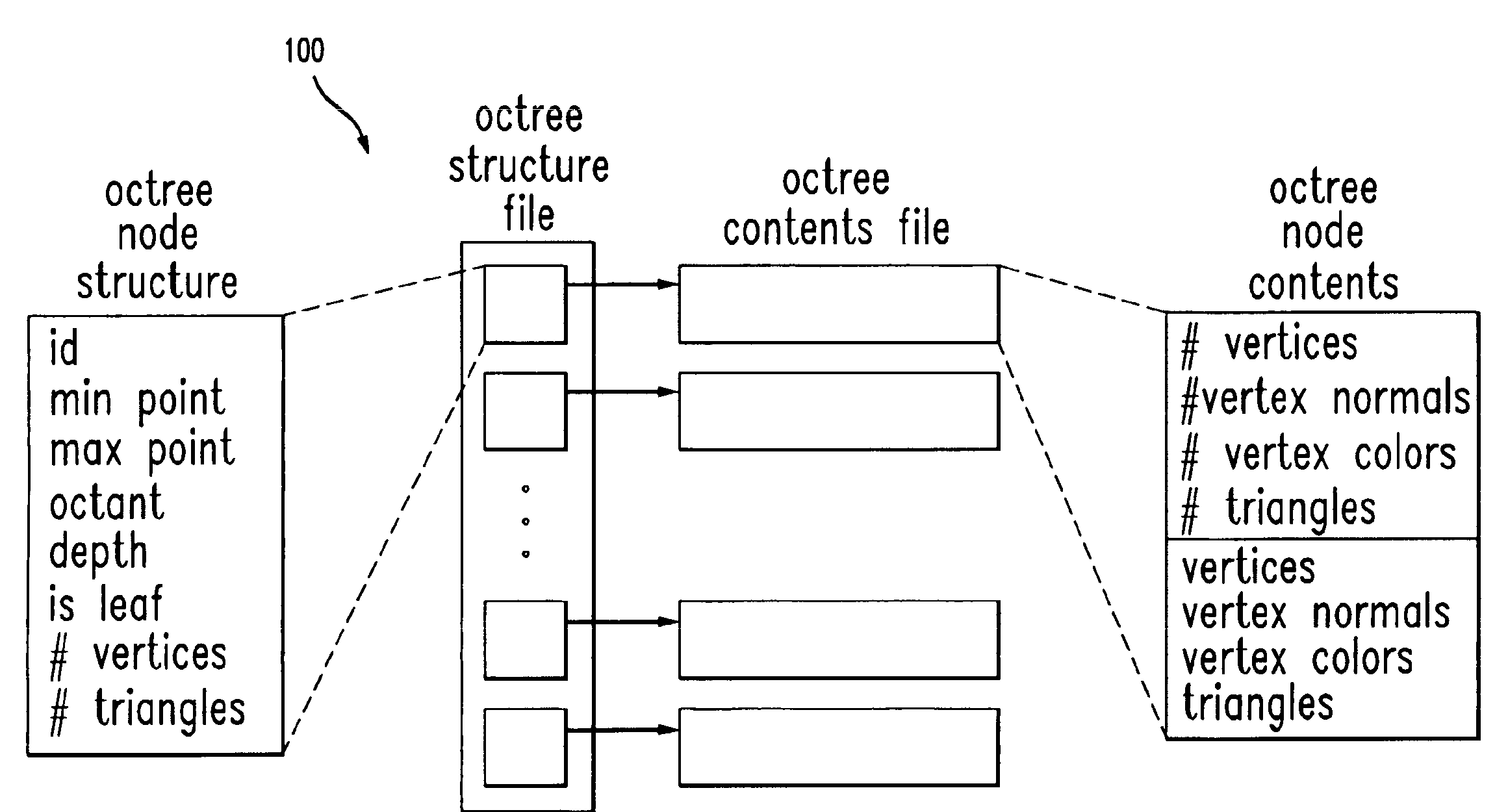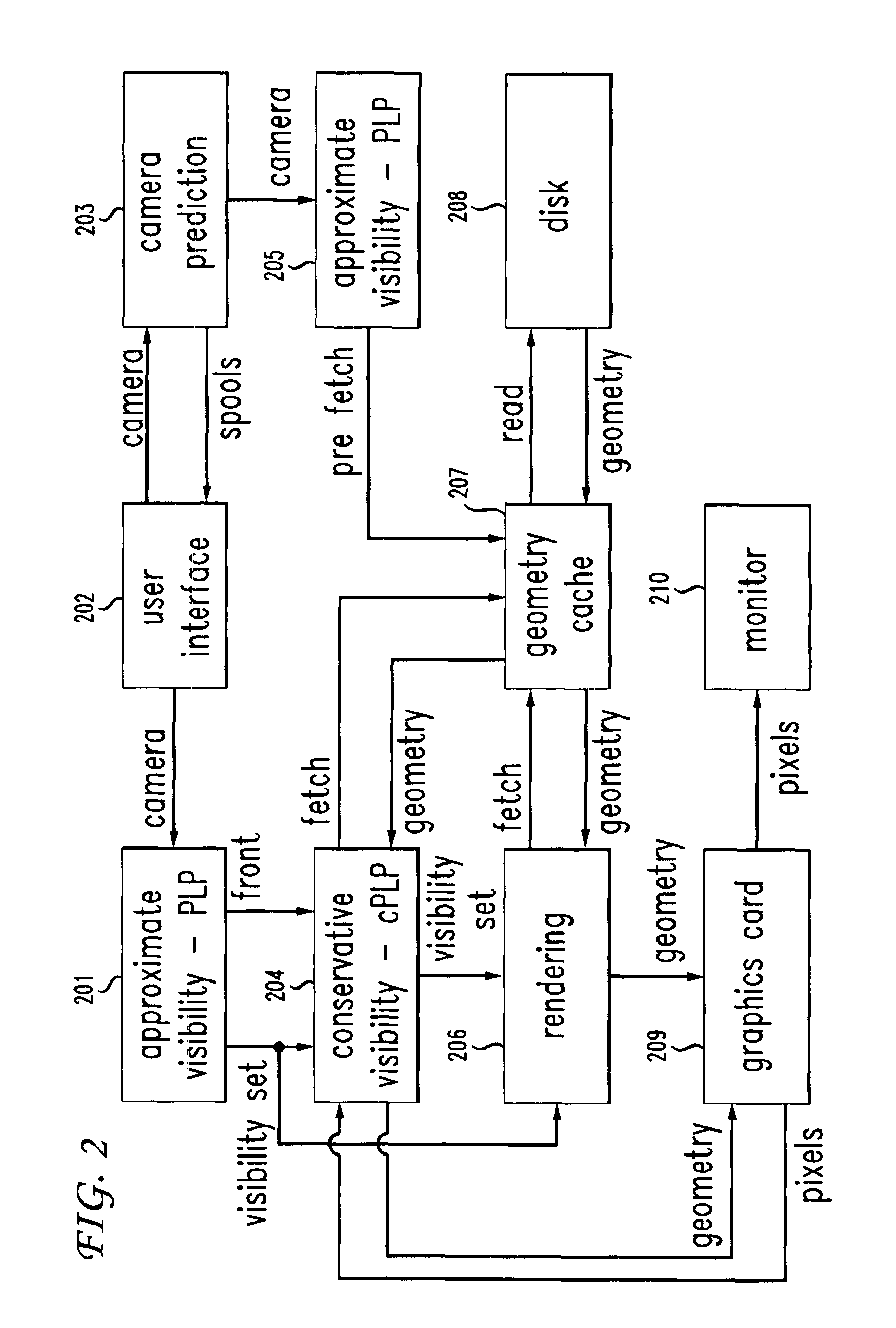Method for out-of core rendering of large 3D models
a technology of large three-dimensional models and rendering methods, applied in the field of large three-dimensional model rendering, can solve the problems of large sgi multi-processor machines with several gigabytes of main memory, large number of i/o operations, and large preprocessing time (on the order of weeks), and achieve the effect of reducing the number of i/o operations
- Summary
- Abstract
- Description
- Claims
- Application Information
AI Technical Summary
Benefits of technology
Problems solved by technology
Method used
Image
Examples
Embodiment Construction
[0023]The present application discloses a system that, besides rendering complex models composed of tens of millions of polygons at interactive frame rates, requires an order of magnitude less preprocessing time than previous systems, and works on a commodity single-processor PC equipped with an inexpensive graphics card. As a preprocessing step, the system creates a hierarchical representation of the input model. At runtime, the inventive system uses PLP (Prioritized Layered Projection), a real-time from-point visibility algorithm first described in J. T. Klosowski & C. T. Silva, The Prioritized-Layered Projection Algorithm for Visible Set Estimation, IEEE Transactions on Visualization and Computer Graphics 6, 2 (April-June 2000) 108-123; and J. T. Klosowski & C. T. Silva, Efficient Conservative Visibility Culling Using the Prioritized-Layered Projection Algorithm, IEEE Transactions on Visualization and Computer Graphics 7,4 (October-December 2001), 365379, the contents of each of ...
PUM
 Login to View More
Login to View More Abstract
Description
Claims
Application Information
 Login to View More
Login to View More - R&D
- Intellectual Property
- Life Sciences
- Materials
- Tech Scout
- Unparalleled Data Quality
- Higher Quality Content
- 60% Fewer Hallucinations
Browse by: Latest US Patents, China's latest patents, Technical Efficacy Thesaurus, Application Domain, Technology Topic, Popular Technical Reports.
© 2025 PatSnap. All rights reserved.Legal|Privacy policy|Modern Slavery Act Transparency Statement|Sitemap|About US| Contact US: help@patsnap.com



